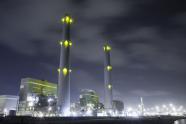EPA Tells Utilities not to Sweat New Soot Rule

In response to a court order, the U.S.
Environmental Protection Agency on June 15 proposed
updates to its national air quality standards for
harmful fine particulate matter pollution, including
soot (known as PM2.5).
A federal court ruling required EPA to update the
standard based on best available science. The court
ordered EPA sign the proposed particle pollution
standards by June 14, because the agency did not
meet its five-year legal deadline for reviewing the
standards. The June 15 proposal, which meets that
requirement, builds on steps already taken by the
EPA to slash dangerous pollution in communities
across the country, the agency said. Thanks to these
prior steps, 99% of U.S. counties are projected to
meet the proposed standard without any additional
action.
EPA’s proposal would strengthen the annual health
standard for PM2.5 to a level within a range of 13
micrograms per cubic meter to 12 micrograms per
cubic meter. The current annual standard is 15
micrograms per cubic meter.
The proposed changes, which are consistent with the
advice from the agency’s independent science
advisors, are based on an extensive body of
scientific evidence that includes thousands of
studies, EPA said. By proposing a range, the agency
will collect input from the public as well as a
number of stakeholders, including industry and
public health groups, to help determine the most
appropriate final standard.
“It is important to note that the proposal has zero
effect on the existing daily standard for fine
particles or the existing daily standard for coarse
particles (PM10), both of which would remain
unchanged,” the agency said.
Depending on the final level of the standard,
estimated benefits will range from $88m a year, with
estimated costs of implementation as low as $2.9m,
to $5.9bn in annual benefits with a cost of $69m.
That is a return that ranges from $30 to $86 for
every dollar invested in pollution control.
PM2.5 particles can be directly emitted from sources
such as forest fires, or they can form when gases
emitted from power plants, industries and
automobiles react in the air.
EPA proposes to grandfather existing permit
applications
To ensure a smooth transition to the new standards,
EPA proposes to grandfather preconstruction
permitting applications that have made substantial
progress through the review process at the time the
final standards are issued. The agency is also
proposing updates and improvements to the nation’s
PM2.5 monitoring network that include relocating a
small number of monitors to measure fine particles
near heavily traveled roads. EPA’s proposal does not
require additional monitors. Also, the proposal
would update the Air Quality Index for particle
pollution.
EPA anticipates making attainment designations by
December 2014, with those designations likely
becoming effective in early 2015. States would have
until 2020 (five years after designations are
effective) to meet the proposed health standards.
Most states are familiar with this process and can
build off work they are already doing to reduce
pollution to help them meet the standards, EPA said.
A state may request a possible extension to 2025,
depending on the severity of an area’s fine particle
pollution problems and the availability of pollution
controls.
The Clean Air Act does not specify a date for states
to meet secondary PM2.5 standards. EPA and the
states determine that date through the
implementation planning process. The same controls
installed to meet the primary, health‐based
standards will also help areas meet the secondary
standards. In 2020, EPA expects virtually all
counties will meet the secondary standards without
state/local reductions.
EPA said it will accept public comment for 63 days
after the proposed standards are published in the
Federal Register. The agency will hold two public
hearings; one in Sacramento, Calif., and one in
Philadelphia, Pa. EPA said it will issue the final
standards by Dec. 14.
Sierra Club applauds new rule, coal-fired power
interests slam it
The Sierra Club on June 15 applauded the proposal as
a major step forward. “Soot is a dangerous mix of
metals, chemicals and acid drops, released into the
air by burning dirty fuels like coal,” it said.
“Even at very low levels, soot is harmful to human
health. When inhaled deeply, soot enters the
bloodstream and is transported to the body’s vital
organs.”
American Coalition for Clean Coal Electricity Senior
Vice President for Communications Evan Tracey said
in a June 15 statement: “We are disappointed to see
that EPA has proposed to change the current air
quality standard for fine particles. For one thing,
a number of states have not finished implementing
the current standard for fine particles. EPA should
focus its efforts on helping these states fully
implement the current fine particle standard, not
move the goal posts again. For another, EPA should
have solicited comment on keeping the current fine
particle standard because there are significant
scientific uncertainties about the benefits of
changing the standard. The changes EPA has proposed
are another example of how the agency is ignoring
the harm its aggressive regulatory agenda is causing
to the U.S. economy.”
Barry Cassell is chief analyst for coal sector at Generation Hub, a unit of Energy Central.
Copyright © 1996-2012 by CyberTech, Inc. All rights reserved.
To subscribe or visit go to: http://www.energycentral.com
To subscribe or visit go to: http://www.energybiz.com